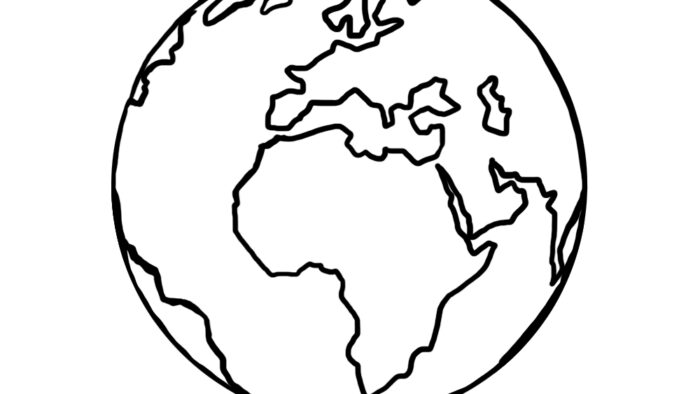The Anubhava Event on December 20, 2020 was a chance for a number of individuals from around the world to discuss their personal journey and work with Ayurveda. Video: https://youtu.be/svhUay4n5e8
The event began with a video message from Canadian High Commissioner, Shri Ajay Bisaria. In today’s global pandemic, we as humans have, by and large, removed the global barriers of place by opting for non-contact, online meetings and discussions. Yet the issue of time still exists, with time difference still causing people in various parts of the world to miss out on events online.
Still, the pandemic offers something positive in the space of time. It is a good time to take a look at how we as a human race look at health, disease, and well being.
Modern science confirms the standing of Ayurveda. However, we still need help with the regulatory systems around the world. Shri Ajay Bisaria described the penetration of Ayurveda in the country of his current placement as a public servant to the Government of India.
Penetration of Ayurveda in Canada:
- Prior to 2017, there was a void of a common platform to share ideas and grow Ayurvedic sciences which could build support across the nation. Then, with 200 founding members, the Ayurveda Association of Canada (AAC) began. Later, other organizations also emerged, including CAMA: Canadian Ayurveda Members Alliance; and Center for Ayurveda and Systems of Indian Healing.
- One of the major issues in Canada is Ayurveda is not recognized as a medical stream. However, there is hope for this situation to be transformed in the future, as homeopathy was in a similar situation 5 years ago, and is now considered as a primary medicine. This is because of the diligent advocacy on part by Centre Council of Research of Homeopathy, and other bodies, in 2016.
- The penetration of Ayurvedic remedies is quite high in Canada: Companies such as Padamshree and Sevathy Ayurvedic Series have developed medicines and herbs locally. Several Indian brands (Himalaya, Patanjali, Dabur) are also imported in large scale quantities.
- Recently, a couple of universities have nominated an Academic chair for Indian traditional health systems, showing the deep desire of students to learn more about the ancient Indic knowledge system.
- Canada has recently signed an MOU with India on Pharmacopia Vigilance. This shows the demand for Ayurvedic remedies.
- Finally, there is a widescale public embrace of Yoga in Canada. One in five Canadians practice yoga, and many of these individuals would be interested in Ayurveda.
Dr. Dhaval Dhru
The question was posed to the doctor: How or why, after being trained in Western Medicine, did you become interested in Ayurveda?
“Somewhere along the line, conventional medicine changed from a noble profession to a health care industry. People were being prescribed more and more medications with more and more side effects. I got frustrated. I decided to look into alternatives. I turned to my heritage, and having come from India, I found solace in Ayurveda.”
Dr. Dhaval went on to look at the fundamentals of Ayurvedic principles and concepts from a comparative perspective.
- Concept of health:
- Conventional describes it as an absence of disease. If you are functioning reasonably in day to day activities, then you are healthy.
- Ayurvedic texts describe health as “sama dosha sama agnischa sama dhatu mala kriyaaha, Prasanna atma indriya manaha swastha iti abhidheeyate”
- With all our physiological functions normal, pleasant state of mind and blissful state of the soul, then we are in good health.
- It’s a tripod of mind, body, spirit.
- Even the World Health Organization (WHO) has integrated this into its definition.
- Western medicine has started including the component of mind as mind-body health.
- Spirit or soul is still not included.
- Goals:
- In Western: Early detection and immunization
- Through Swasthya: Aim is health maintenance, health promotion, and disease prevention.
- In the covid-19 situation: more advice given is about the Ayurvedic principle: Vihara, Ahara, Rtu and Dinacharya
- Prakriti:
- Each of us has our own constitution.
- We have infinite different possibilities.
- Western model uses a generalized approach.
- Now, Western medicine is increasing in individualized approach based in some specific fields
- Agni and Ama: Digestive health
- Deranged agni causes ama, which causes physiological, psychological, and even spiritual issues.
- Recently, western medicine has talked about gut-mind connection, GI Health and gut immunity.
- Chikitsa: Shrammana and Sodhana:
- It’s a hallmark of Ayurveda.
- Western: No such concept. It’s mostly Shramman: antibiotics for infections and pharmaceuticals for non-communicable diseases.
- No system is perfect. Even western has something to offer:
- It is really great for acute medical problems.
- It’s really great for emergencies such as trauma, heart attacks, strokes, and so forth.
- Western medicine helps to stabilize an individual quickly.
- For non-communicable, metabolic diseases: Ayurveda manages and overcomes the imbalances.
In the US, Ayurveda is becoming more and more popular. Many western-trained, non Indian doctors are looking at it as part of integrative medicine. Several organizations have been promoting it in the US for the last 20 years. There are over 1000 professional members, and 1600 general members. Several schools recognized by NAMA. There are standardized certification exams and standards, and also developing an accrediting body to ensure institutions exhibit quality training.
Dr. Dhawal explained that there’s a long journey ahead for Ayurveda to be properly recognized. We must take the strides one step at a time. One of the first areas to develop is research in Ayurveda as a science. We need to make significant effort by producing valid clinical research.
Dr. Dhawal concluded that “Ayurveda is relevant today as it was in the past,” and enthusiastically prophesied that it will “continue to be in the future!”
Dr. Abhishek Joshi:
A young and accomplished teacher, Dr. Abhishek has been in Indonesia for nearly a decade. He explained the view on Ayurveda in Indonesia.
It is important to note that 2010 census data in Indonesia showed that 40-59% of the population use indigenuous health practices, and Ayurveda was a portion of that.
Sharing the difficulties of setting up his research, teaching, and clinical practices in Indonesia, he stated that one of the main challenges was to connect the dots between the Ayurveda system from India and this far away nation. Before taking up the position in Bali, he was wondering about this.
It turns out, he didn’t need to worry so much. There are a lot of commonalities between India and Indonesia, especially with Bali. Indonesians don’t take Ayurveda as alien: it’s very much part of the life.
Indonesia already has Jamus, or Kashayams, freshly made in the villages. Ginger and turmeric were out of stock during Covid 19, because it was needed to make Jamu.
So slowly, Dr. Abhishek was able to build Griya Sehat Ayurveda: A home where health is delivered! In order to bridge the gap between the countries and between Ayurveda and local culture, he contemplated and researched to find a commonality: a tapestry of the Samudra Mantanam. This is a story of the first medicine, Amritam. THrough the churning of the ocean with a mountain and using a snake to turn, it gave rise to poison and then nectar! This story is common to both Ayurveda and local cultures in Bali. Dr. Abhishek also worked with local Indonesian artisans to create a beautiful statue of Dhanvantari, which made the Lord more accessible to Indonesians.
Other commonalities can be found. Usada (Balinese) is the local indigenous system of health. That’s like Aushadha in Sanskrit, which means “Medicine”. Just like several cultures in India, Usada Bali has many Lontars, or verses, written on the leaf of the Rontal Tree (Lontar is the leaf of the Rontal Tree, a Palm leaf). Furthermore, 70% of the medicines are the same in Usada and Ayurveda, or at least the elements and ingredients are. They also have similar references and stories.
Indonesians who follow Usada believe in Panchamahabhutas. They have books on Rare (Pediatrics), Dalem (Internal Med), Eda (Psychiatry), Kacacar (Smallpox), Cukildaki (Dermatology), Kamatus (Venereology), Manak (OBGYN).
In order to make the medicines locally, Dr. Abhishek usually prescribes a mix of Ayurveda herbs and Indonesian herbs. Indonesia has a huge amount of flora and fauna that can be utilized for medicinal value.
Dr. Abhishek explains “We have discussions with all Southeast Asians local medicine systems and their institutes. We do exchanges with India, get people from all departments to learn and all aspects of Ayurveda.”
Overall, he has found a lot of synergy in Bali.
Ms. Aadya Joshi
At seventeen, with several awards to her credit, Ms. Aadya spoke about her database of thousands of important Ayurvedic and Indian-origin plants which promote biodiversity. Scientific data shows that native trees support more species than foreign trees. Research reveals plants of Ayurveda are crucial for healthy ecosystem.
Ms. Aadya showed how non-local plants cause rapid loss of biodiversity, as local insect and bug species are not able to adapt to foreign imports. Leaves of all plants have phytochemicals, and insects grow along with them. If you introduce new plants, the insects find the chemicals poisonous, and die. This stymies the cross-pollination potential.
Ms. Aadya’s organization, Vocal for Local, works with local city and regional management groups to implement planting of local trees and herbs that support biodiversity of species.
Dr. Ramkumar:
Dr. Ramkumar spoke on the metaphorical significance of Lord Dhanvantari. Once, the God and Demons were churning the ocean in a sort of competition. They used a mountain to churn and a snake as the rope to turn the mountain. At first, poison comes out; and finally, Lord Dhanvantari appears with the pot of nectar.
- Gods are like the Bhakti, unconditional love and positivity.
- Demons represent the innumerable emotions: Ragas. Negativities
- Ocean is our mind.
- Mountain (Mandara): the buddhi or discerning intellect
- Snake (Vasuki): Abhyasa, relentless practice.
- Poison is the Ego or Ahamkar.
The moral of the story is that once the ego is released, the healer comes out within us. This is what we all must strive for.





